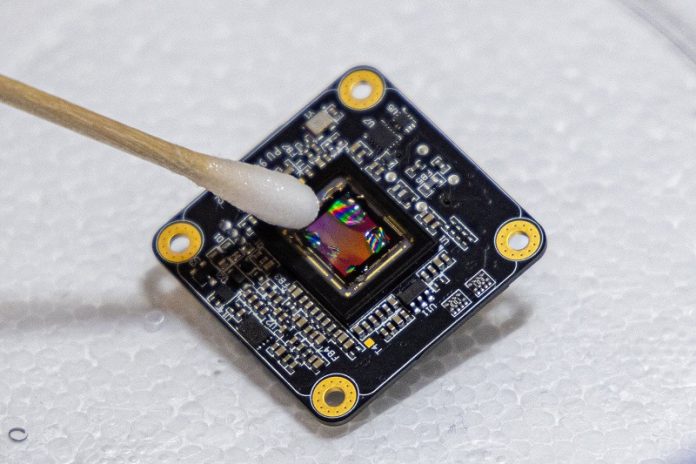
Scientists at the University of California, Davis, have built a miniature microscope that can capture three-dimensional images of brain activity in real time—while a mouse is awake and moving freely.
The breakthrough could transform how neuroscientists study the brain and open the door to new treatments for brain disorders.
“What we are doing is creating technology to image brain activity in freely moving and behaving mice to open up the behavior paradigm,” said Weijian Yang, professor of electrical and computer engineering at UC Davis.
“The goal is to see how brain activity drives behavior or perception in real time.”
The device, called DeepInMiniscope, is described in a new paper published in Science Advances.
It builds on Yang’s earlier work designing a lensless camera capable of creating 3D images from a single exposure.
While that earlier system worked well for robotics and industrial applications, it struggled with biological samples because light scattering in living tissue makes imaging difficult.
DeepInMiniscope overcomes this challenge with a carefully engineered mask containing more than 100 tiny lenslets.
A powerful neural network then combines the images from each lenslet to reconstruct detailed 3D views of brain activity. This design allows researchers to capture the fine structures of neurons and the way they fire in real time.
“Our algorithm combines interpretability, efficiency, scalability, and precision,” said Feng Tian, a postdoctoral researcher in Yang’s lab and first author of the paper. “It requires only a small amount of training data, yet it can robustly and accurately process large-scale datasets at high speed.”
The miniature microscope is also designed to be small and light enough for a mouse to wear comfortably while moving around.
Measuring about 3 square centimeters—roughly the size of a grape—and weighing just 10 grams, about as much as four pennies, it represents a major leap forward compared to earlier devices.
Yang hopes the next version will shrink further to just 2 square centimeters, “like a hat for a mouse,” and eventually become cordless.
By enabling real-time brain imaging in animals that are awake and behaving naturally, DeepInMiniscope opens the door to new discoveries about how the brain processes information, makes decisions, and controls behavior.
Beyond basic science, the technology could also help researchers better understand brain disorders such as Alzheimer’s, Parkinson’s, and epilepsy, and guide the development of new therapies.
“This technology not only advances our fundamental understanding of the brain,” Yang said, “but also contributes to improving treatments for human brain disorders in the future.”
Source: UC Davis.



